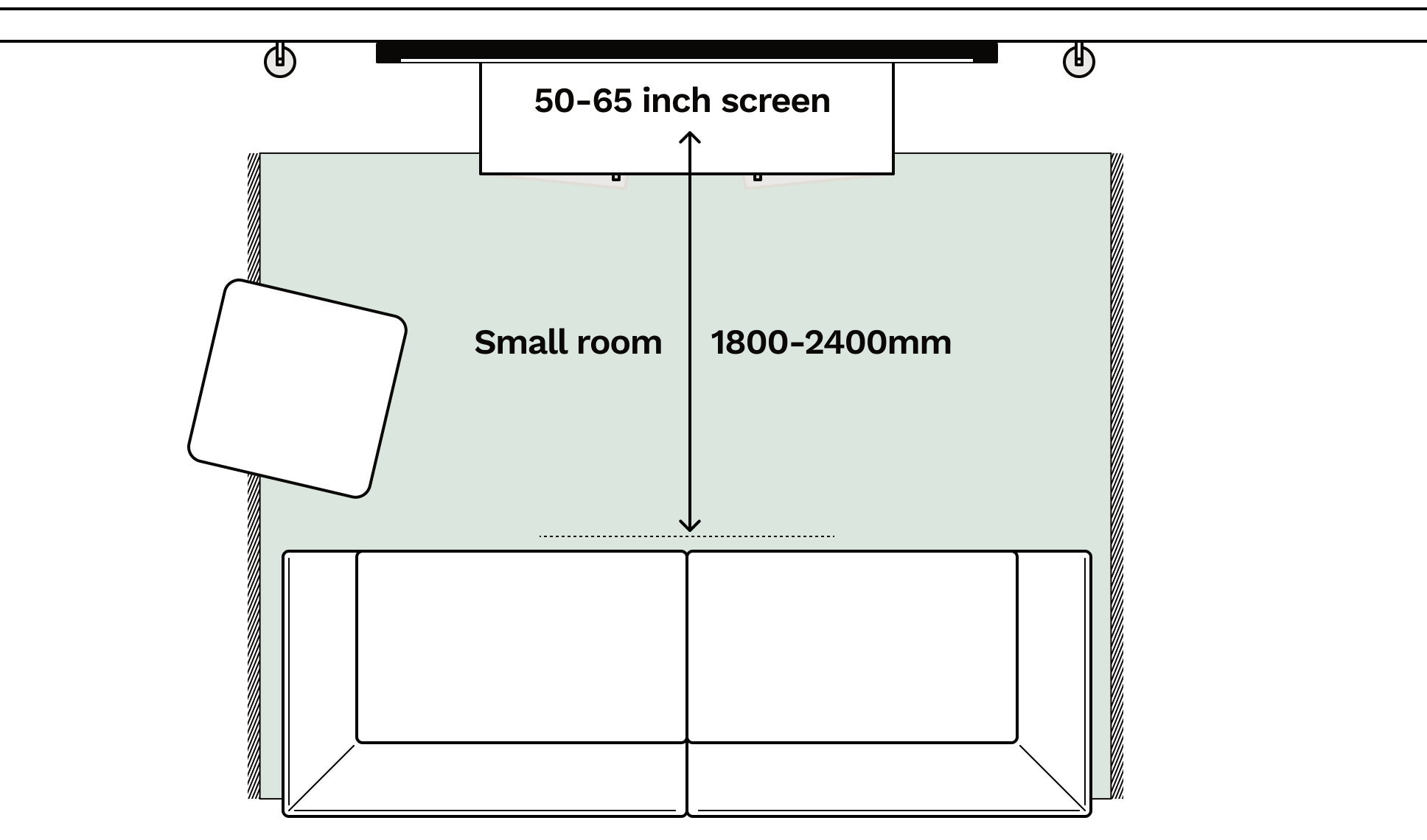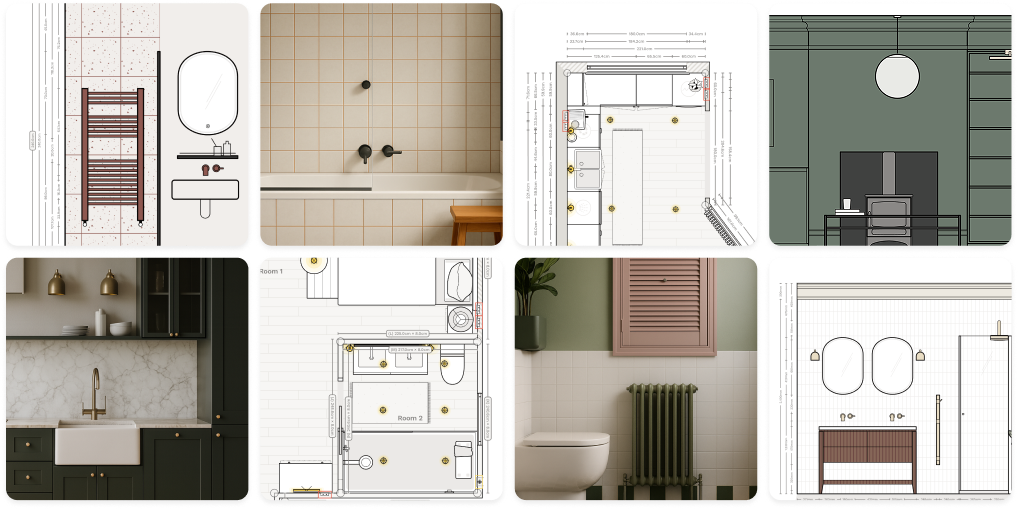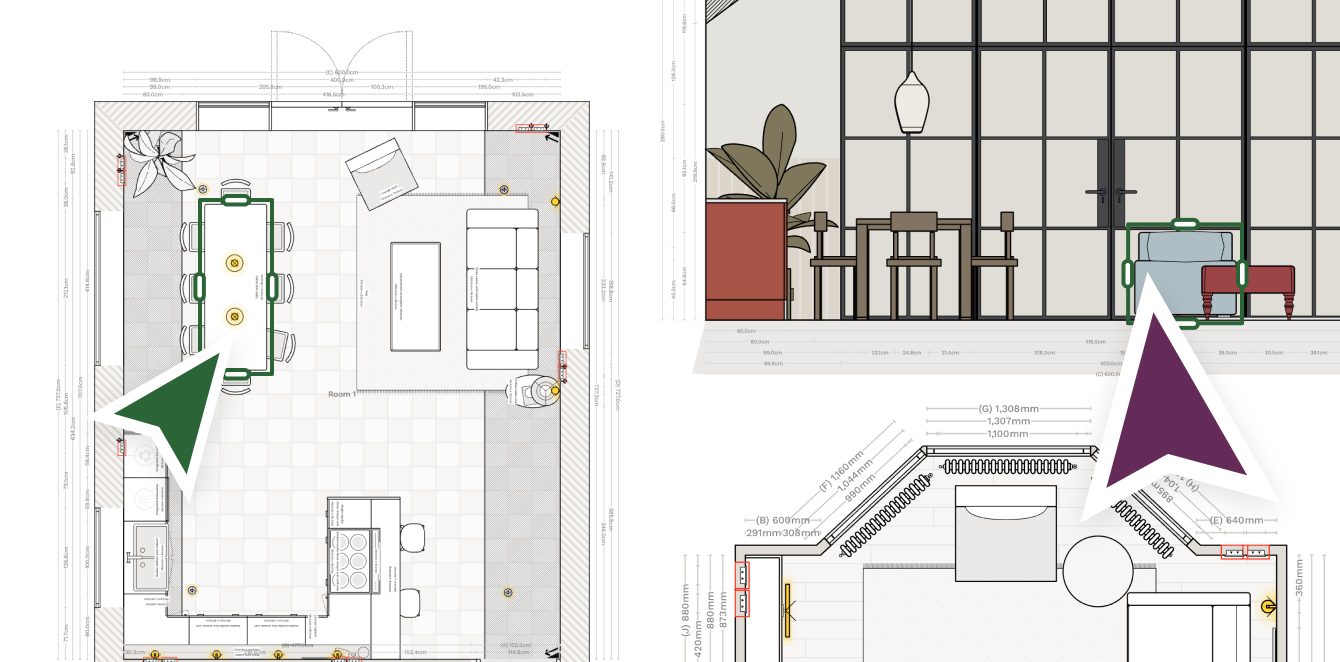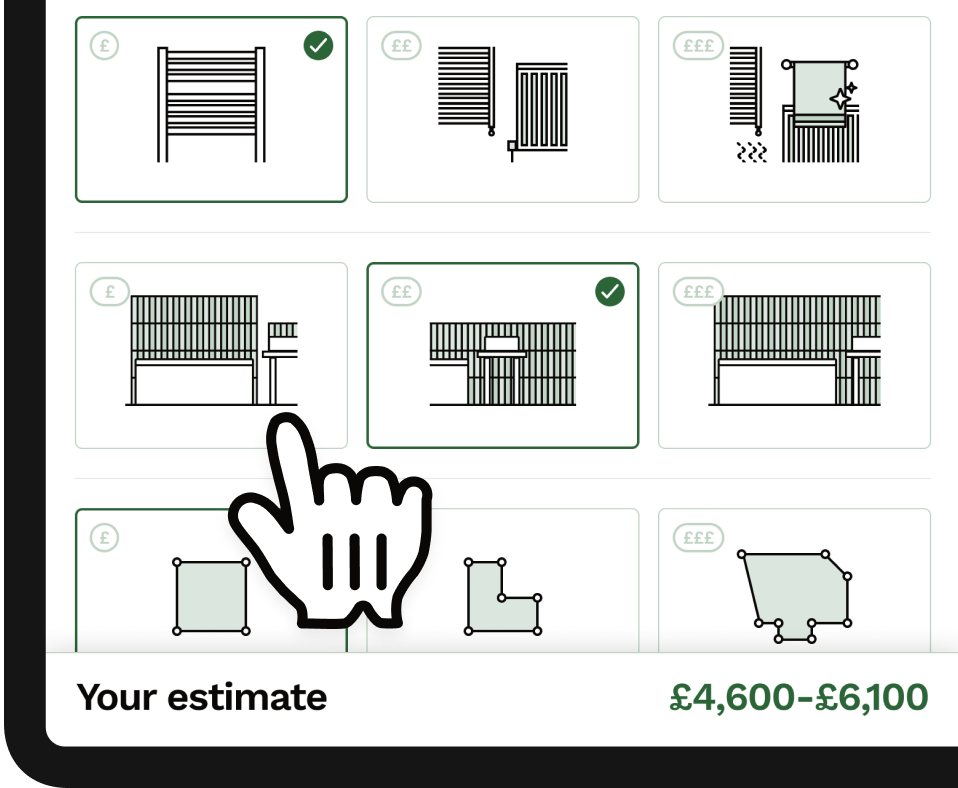Help & advice
Choosing the right TV/screen size for a home cinema
How to set up a home cinema with the right screen size? Getting this right is essential for a truly immersive cinema like experience. Before you start shopping for a projector or new TV, work out what is right for your space first! The ideal TV or projector screen size is based on the distance between your seating to the screen. Get out that measuring tape!

Screen size and viewing distance
A good rule of thumb is to base the screen size on your seating distance. A simple formula is to divide your viewing distance by between 1.5 to 2.5. As we're talking about home cinemas here, you're going to want to go bigger, so divide your distance by 1.5 as a starting point.

For example:
- Small room (180-240 cm viewing distance): 120-160 cm screen (~50-65 inch screens)
- Medium room (240-300 cm viewing distance): 160-200 cm screen (~65-80 inch screens)
- Large room (300-360 cm viewing distance): 200-240 cm screen (~80-100+ inch screens)
For a true cinematic experience, projectors with a 254 cm (100-inch) screen or larger might seem ideal, but ensure your room has enough wall space, that you can sit far enough back to avoid a sore neck and have suitable lighting control to immerse yourself.
Resolution and picture quality
- 4K Ultra HD: For most home cinemas, 4K resolution is now the standard. It offers excellent clarity, especially on larger screens, allowing you to sit closer without seeing pixelation
- HDR (high dynamic range): HDR enhances contrast and the range of colours, making images appear more lifelike, particularly in darker or brighter scenes
- OLED vs LED/LCD: OLED displays provide deeper blacks and superior contrast ratios, ideal for darker rooms. LED or QLED TVs are brighter and perform better in well-lit spaces
Audio considerations
- Surround sound: A 5.1 or 7.1 surround sound system greatly enhances immersion, with strategically placed speakers delivering audio from multiple directions
- Soundbars: For smaller rooms or more streamlined setups, soundbars can significantly improve audio compared to standard TV speakers
- Room acoustics: Consider improving acoustics with curtains, carpets, or acoustic panels to reduce echoes and enhance sound quality
Lighting and ambience
Controlling the light in your room is vital, especially for projector-based setups. Blackout curtains or dimmable lighting will help create the right atmosphere. Additionally, LED backlighting behind TVs can reduce eye strain and add ambience to the space.
Seating and comfort
Comfortable seating is key for enjoying your home cinema. Ensure seats are spaced properly from the screen to prevent neck strain, and consider reclining options for longer viewing sessions.
Final thoughts
Creating the perfect home cinema is about finding the right balance between screen size, picture quality, audio performance, and room ambience. Match your screen size to the room's dimensions, invest in quality sound, and control the lighting for an optimal viewing experience.
Frequently asked questions
Design, Plan, Renovate. Simple.
Save thousands and finish faster. Renovation planner app with recommendations and tips.
Renovating? Read more...
Lounge
Understanding the costs of a Lounge renovation
Renovating a lounge / living room is one of the most impactful ways to refresh your home.
All rooms
What materials are best for custom made furniture?
Solid wood, MFC, MDF, plywood, glass and mirrors are the most common materials.
All rooms
Save money, save energy and save water from your renovation.
You've got the vision for your dream room - colours, tiles, that perfect finish. But have you thought about how it's going to perform?
Free tools to get started




Start your renovation with Reno